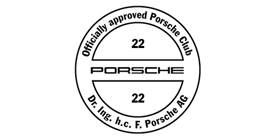Hi Tom,
I fitted a pipe to the port on the crossover and ran a pressure gauge into the car to look at the back pressure.
At modest boost levels (10 psi say), the crossover pressure doesn't get any higher than the boost pressure, but at higher boost (18psi say) it rises significantly and at high revs is well over 25 psi - bit difficult to watch both gauges at full chat and drive the car at the same time mind you! This was observed with my old turbo (#6 hotside) and the standard downpipe and exhaust - i.e. the configuration when my car made 330bhp @ ~17psi.
ORIGINAL: Diver944
A single port WG (with a weak factory spring) is pushed open purely by the pressure in the crossover, even before your intended boost level is reached. A dual port applies pressure to the other side of the WG diaphragm and forces it shut until the desired boost is reached
ORIGINAL: barks944
But isn't the pressure applied to the 'other' port only ever equal or less than the pressure on the top port (which is always manifold pressure). Therefore you can't ever have more pressure on the 'other' side than on the side directly connected to manifold. So you can't really counteract the pressure from the crossover.
As Paul says, the exhaust pressure in the crossover will overcome a weak wastegate spring and in any case a gradual opening of the WG is what the factory setup tries to do anyway, with boost being regulated by the degree of opening as Albert reported rather than a more digital open/closed type control. Although it may have sounded like it was wide open from 4,000 rpm it was probably open in slightly varying degrees over the rev range.
The spring in the factory wastegate was obviously specced with an appropriate strength to resist the standard level of pressure in the crossover while still being able to be controlled by the boost signal directed to the WG via the CV as controlled by the KLR.
As the spring weakens with age it can no longer resist the crossover pressure and starts to allow the WG to be forced open too early. Equally, if we start running higher boost levels and therefore higher crossover pressures, even a good condition standard spring may not be strong enough. When you buy a DPW, it will have a strong enough spring to cope with higher than standard boost. This is how it resists the higher back pressure in the crossover not because it is a dual port design.
We could achieve the same end by fitting a single port WG with a stronger spring. The reason for fitting a dual port design is simply to allow an MBC to be used - which cannot work with a single port WG.
Coming back to your original concern about control if the crossover pressure is much higher than boost pressure....you can't really equate psi in the crossover with psi in the inlet as being equal when you look at the way the wastegate will react.
The pressure in the crossover acts on the area of the back of the WG valve that is available to it - so it may be 25 pounds per square inch but it is pushing on a small area - say 1 square inch maximum so 25 lbs force. The manifold pressure in the cold side of the WG acts on the full area of the membrane - so it may only(!) be 18 pounds per square inch but it is pushing on say 4 square inches which would generate 52 lbs force. The spring could therefore be chosen to require say 35lbs force to compress it.
Also with an EBC like your Apexi you can run it in dual port mode so it applies the boost pressure to either port and you don't get this equalisation. I think that in dual port mode the controller can switch the pressure from the top to the bottom port in proportion as it wishes so it can suppliment the WG spring if need be....
Having said that though, I have tried both single port and dual port modes with my Apexi and it didn't make any difference to boost control - both ways seem equal in keeping the WG closed until required, as you would expect with an appropriate spring.
You can, of course, also get different sizes of some wastegates to cope with higher exhaust flow levels. Tial for example come with different sized valves don't they - 38mm being a popular size for our cars I believe? I've not investigated these but I presume the bigger sized ones simply dump exhaust more quickly when required. This would also change the pressure differential at the turbo more quickly and so change the boost produced though wouldn't it? A bit like applying more boost signal to the WG in the first place to dump more exhaust so the controller will then tell it to shut again!
I guess it's about selecting WG components and spring rates to achieve a good balance to allow control given the flow rates of the engine concerned, and being able to dump exhaust fast enough to keep the turbo under control.
Edit - Ooops, I seem to have rambled on a bit (again!) sorry chaps [8|]









